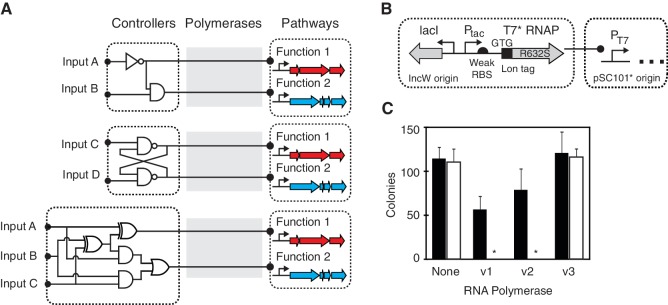Figure 1.
Separation of synthetic regulation onto a genetic controller using orthogonal phage polymerases. (A) The controller contains genetic sensors and circuits, the output of which is the expression of a phage RNAP, which then activates a pathway. The pathways can be programmed to respond to different conditions by swapping the controller without further genetic manipulation. (B) Modifications are shown to reduce the toxicity of T7 RNAP, the details of which are described in the text. (C) Toxicity of T7 RNAP variants is shown. Each variant was co-transformed with a different plasmid bearing a T7 promoter, and cells were grown on plates containing 1 mM IPTG to fully induce RNAP expression from the Ptac promoter. RNAP variants containing different combinations of modifications are shown (v1 = T7 RNAP in pIncW plasmid, v2 = addition of Lon tag to v1, v3 = addition of weak RBS and GTG start codon to v2). The data are shown for the expression of the T7 variant in the absence of a T7 promoter (black, plasmid N23, Supplementary Data) and the T7 promoter driving red fluorescent protein (white, plasmid N155, Supplementary Data). Asterisks indicate that no colonies were observed.

